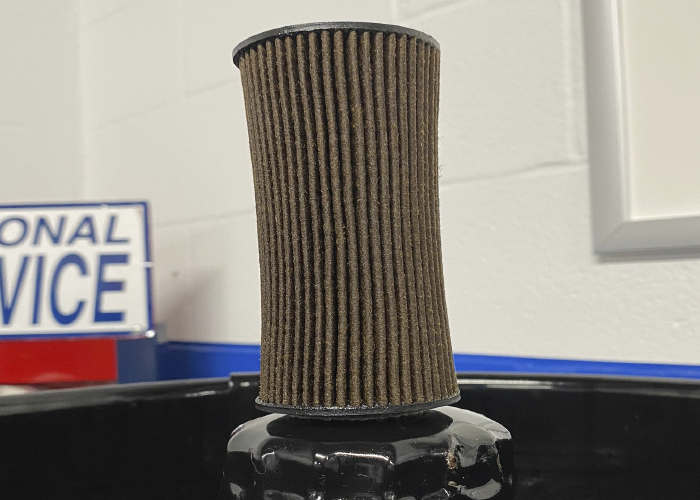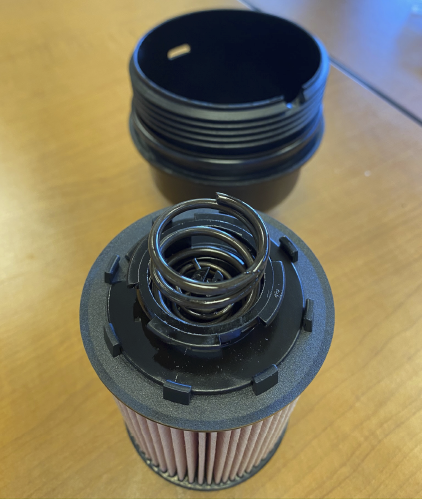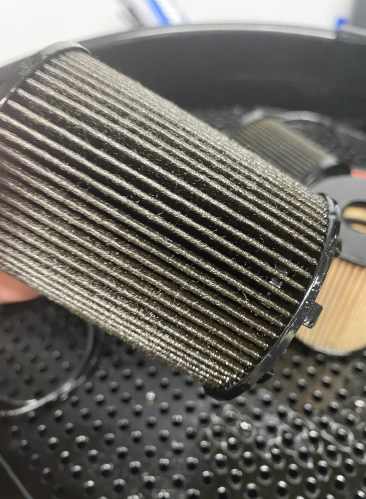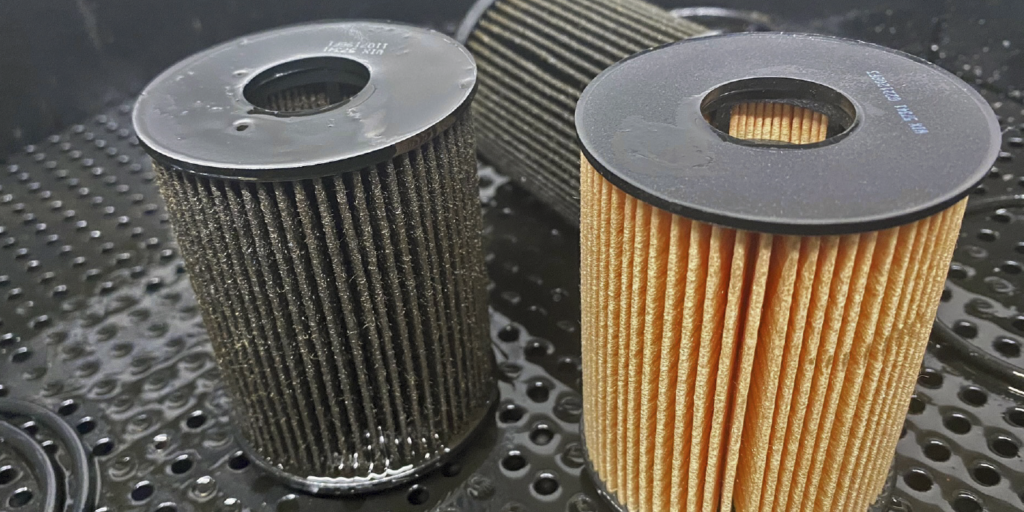Article courtesy Underhood Service.
The old oil filter can tell you a lot about an engine, so always inspect it when you remove it. If you don’t, you might end up owning the damage done during the last oil change interval.
Cartridge oil filters are easy to inspect, but canister oil filters only give you a limited view inside the holes in the base plate. It might be necessary to cut the can off the base plate to confirm any suspicions.

Only in extreme cases of abuse will you see metal shavings or large chunks of metal debris. But, most failures of the filter damage the filter media. Check the pleats for damage like tears and deformation. The damage could be a sign that the filter was not installed properly during the last service. It can also indicate that the filter was clogged and restricted oil flow. Also, look at the end caps of the filter for separation of the sealing surface.
Pressure Differential
The main enemy of any filter is pressure differential. When a filter becomes clogged, the pressure outside the filter media becomes much higher than on the inside of the filter media. This is called a pressure differential. If the pressure differential is high enough, it can collapse and tear filter media. A high enough pressure differential can collapse a metal center tube long before an oil filter canister can burst. For some cartridge filters, you may notice an hourglass shape that indicates either the filter clogged, or a heavier-than-recommended oil viscosity was used. The bypass valve can help prevent excessive pressure differentials that can damage oil filters. But, when the bypass valve is open, the oil is no longer being filtered.

Bypass Valves
The bypass valve allows oil to bypass the filter if it is obstructed or clogged. Bypass valves can differ in design depending on the application or filter manufacturer. The valve can be as simple as a spring at the top of the filter or even integrated into the engine block or filter housing. A cartridge oil filter has the bypass valve built into the cap or housing for the filter. Some cartridge oil filters have replaceable bypass valves. If you see any piece of plastic or the filter does not clip in or seat evenly, replace the cap, bypass valve or maybe the housing.
Anti-Drainback Valves
An anti-drainback valve prevents oil from draining or siphoning back into the oil pan. This can prevent a dry start and bearing damage. On some engines, the anti-drainback valve(s) prevent oil from leaving valvetrain components. Due to the extreme environment in the oil system, the drainback valve can deteriorate and leak if not changed.

For variable valve timing actuators, if the oil drains out of the chambers, it can cause a clunk or knocking noise during startup. In some cases, the pin that locks the actuator can shear. The performance of the anti-drainback valve is critical for stop/start vehicles.
Most cartridge oil filters that are on top of the engine engage an anti-drain back valve. When the filter is removed, the oil in the housing drains into the pan. This oil is typically the dirtiest in the engine and needs to be drained from the engine. Also, the excess oil can cause the engine to be overfilled when new oil is poured into the engine. So leave the drain plug out until the oil filter is removed.

Cartridge Clues
One of the most telling signs that a cartrige oil filter was pushed past the recommended interval is the condition of the O-rings sealing the cap and housing. If the rings retain the compressed shape or they are hard or brittle, chance are the owner may have gone too long between oil changes.
Do not pull, pry or stretch the new O-rings during installation. Lightly lubricate the O-ring and roll it in over the threads to the correct position on the housing. Lay out the old and new O-rings: Some new applications may require up to four new O-rings, and some filter kits have multiple O-rings in the package to fit different applications. When the new filter is unboxed, use the old O-rings as a basis of comparison when looking at the new O-rings.
Some customers you can’t trust when they come in for an oil change. Some assume that fresh oil and a filter might cure a driveability concern. If you are unfamiliar with the customer or vehicle, ask them if they are near or over the oil change interval. Write on the order that the customer requested the oil and filter changed. This simple tip can save you if the customer thinks you are to blame for an unrelated issue.














